- Home
- Gerald Hammond
A Brace of Skeet Page 2
A Brace of Skeet Read online
Page 2
He pretended not to hear my question. ‘Do they hold some of the big competitions? Championships and the like?’
‘Almost never. They host some charity shoots occasionally. But mostly the facilities are used for practice, coaching and friendly, informal competitions at weekends. Game shooters sharpening up for the season and top-level competitors getting ready for the big competitions elsewhere. Very relaxed and casual and great fun. Now, either tell me what this is about or take me home.’
He looked at me reproachfully. Policemen hate to tell you what something is all about. ‘There has been a dead man found there. I know no more than that, so there is no use you asking me any more questions. It is outside my territory. There was some disagreement as to whether it could have been caused by an accident, so they telephoned me and asked me to bring along my tame expert.’
‘But that’s Dad,’ I said.
‘I know that well. But in his absence, you can deputise for him. You have shown in the past that you have the knack of it.’
Mr Munro had always pretended to believe, or else laboured under the delusion, that Dad’s successes owed more than a little to my help. Dad’s curiosity and his insatiable interest in anything to do with guns or their ballistics had involved him in a number of investigations of crimes involving firearms, sometimes on the side of the law but, because forensic laboratories are often under the control of the police, more usually on behalf of the defence. Once or twice, good luck had helped me to lay my childish finger on the crucial question to ask, which only goes to show that if you fire enough shots you’ll hit something in the end. Before I could protest that I was hardly qualified to advise the police, the Chief Superintendent was speaking again.
‘I am surprised that it has not happened before,’ he said, severely. ‘A whole bourach of grown men with shotguns all blazing away at moving targets.’
I had forgotten how anti-shotgun Mr Munro had always been. It was the one subject on which he and Dad could be counted on to get into furious argument.
‘It isn’t like that at all,’ I said, trying not to laugh. ‘It’s all very disciplined, with people shooting one at a time and strict rules about emptying the gun before turning round. Anybody waving a gun about gets sent home straight away. Even on the Christmas Eve shoot . . .’ I stopped. There was nothing to be gained by fuelling Mr Munro’s belief that all shotgun owners were mad if not actually criminal.
‘Tell me about the Christmas Eve shoot,’ he said quickly.
On second thoughts, it was always easy and rather fun to shock the Chief Superintendent. ‘I’ve never been to it,’ I said. ‘It’s the one occasion of the year when it’s strictly Men Only. But Dad’s told me about it. There’s a running buffet; but there’s also a teetotal safety officer appointed, and he has absolute power to stop anybody shooting who’s had enough to affect his safe performance.
‘There’s usually a good turnout. They have several small handicap competitions for prizes of Christmas goodies. Then, for the main event, they each put a ten-penny piece in the kitty for every pair of shots. They shoot easy doubles off the tower and whoever misses a bird drops out.’
‘And the last man left in collects the kitty?’
It was a shame to have to correct him just when he was sure that he was catching on. ‘Unless the kitty’s been won before then,’ I said. ‘You see . . . did you know that a clay pigeon is sort of hollow underneath? It’s shaped like a small straw boater.’
‘I will take your word for it,’ he said.
‘Thank you. Well, on Christmas Eve, among the stacks of clays loaded into the magazine of the automatic trap, quite a large number have had items of ladies’ underwear inserted, held in with a piece of cardboard. When the clay’s broken, that’s left floating in the air and a cheer goes up.’
‘A terribly expensive and wasteful proceeding,’ Munro said, sternly. The waste seemed to offend him more than the sexist humour.
‘That nylon stuff’s only pennies at sale time,’ I said, ‘and most of it can be used over and over again. Who’s going to notice pellet holes in cheap lacework? Anybody getting a bra and a pair of panties in the air at the same time scoops the kitty. Then they finish up with a drinking session and several minibuses take them home.’
The Chief Superintendent sat dreaming. As a true Highlander, the drinking would not have offended him as much as the frivolous expense. His Calvinist conscience may have been unable to compete with the mental picture of a sky filled with floating lingerie.
But after a minute of contemplation he shook off his enchantment and, as the car climbed the slopes of the Moorfoot Hills from farmland to moors, he questioned me closely about the different disciplines of clay pigeon shooting.
The Moorfoot Hills are dotted with reservoirs, but while Portmore Loch, Gladhouse Reservoir and the others are to the north and serve Edinburgh and its satellites, Moorfoot Loch Reservoir itself was formed in a valley in the southern slopes to provide water for Peebles and Galashiels and as far as Newton Lauder.
Our road was narrow but in good order. It brought us up to the left of the dam and suddenly a whole new tract of scenery opened up. The sails of several dinghies dotted the water. A sprawling complex of buildings showed up at the far end of the reservoir, perhaps a mile away. The buildings were modern in design, jolly to the point of being skittish in character, and yet managed to make concessions to the countryside by lavish use of stone and timber.
‘That place is new since I last came this way,’ Mr Munro said. ‘What is it?’
‘Leisure complex,’ I said. ‘Timeshare units and a country club. They have horses and squash and tennis, and those dinghies. You can’t see it from here, but there’s a golf course beyond. The first stage was only finished about a year ago and already they’re planning the next extension. Some of the occupiers turn up to shoot at the Gun Club. One or two of them are members.’
The Chief Superintendent grunted. ‘Whatever next?’ he said. ‘Tell me about Skeet.’
Our road swung away from the reservoir and then ran parallel to the waterside. We entered a gateway in a wire fence, not far short of the Leisure Complex. A gravel drive brought us to the clubhouse carpark, which was cluttered with an unusual number of cars for a weekday.
From where the car stopped, the club seemed to consist of the neat clubhouse and, away to our left, the Skeet layouts beyond a stretch of grass and a bed of flowering heathers. But I knew that most of the facilities lay where the water seemed to begin, on a broad stretch of level ground below the drop of an embankment which bisected the site. The top of the tower showed above the clubhouse roof.
I could see uniformed officers conducting a meticulous search over by the three Skeet layouts, but a group beside a nearby car was in deep discussion. They were uniformly dressed in trousers and white shirts, complete with collars and ties but each with a jacket slung over one arm in deference to the heat of the day. An anticyclone had settled over Scotland a few days earlier and we were enjoying – or hating, according to taste – a rare heatwave.
‘Do not say anything until I speak to you,’ Mr Munro whispered. He sounded more mischievous than I had ever known him to be.
As we got out of the car, leaving Sam to sulk on his own, they glanced at me with masculine interest and then, judging me to be without either importance or appeal, looked away. No woman likes to feel uninteresting. It was as humiliating as being ignored by a sex maniac. I could have kicked myself for not being firmer about going home to change, or Mr Munro for not heeding me.
The tallest man of the group detached himself, came over and shook hands with Mr Munro.
‘Well, Gordon,’ Mr Munro said. ‘What is this help you’re looking for?’
Gordon, whoever he might be, looked surprised. ‘There was no need to come yourself, Hamish,’ he said. ‘We have a suspicious death here. Some of our officers go in for this clay pigeon shooting lark, but only at a lowly level with manually operated traps. We needed somebody who knows about th
ese fancy gadgets.’
‘It was quiet in the office. Show me the problem,’ Mr Munro said. ‘We’ll see whether I can’t be of any help.’
Gordon, who I soon gathered was Superintendent McHarg, hesitated and then, being out-ranked, he shrugged and led the way towards the Skeet layouts. I tagged along. The Superintendent had a definite Glasgow accent, but it was obvious that the two men not only knew but tolerated each other. I remembered then that a Hebridean, when he thinks of civilisation, turns his mind first to Inverness and then to Glasgow. The Glaswegian, therefore, despite being poles away in accent and attitude, becomes a sort of honorary Highlander.
A path had been marked out and we stayed strictly between the tapes. It led past the bed of heathers and a plastic bin set to receive spent cartridges, then right-handed round the first safety wall to the nearest of the three Skeet layouts. A semicircle of slabs set into the grass demarked the seven ‘stations’ from which a shooter would tackle the birds which would be sent across his front from the two trap-houses, but our path led along the wall to the end trap-house.
‘Ah,’ said Mr Munro knowingly. ‘Skeet.’ Mr McHarg looked at him sharply but I almost gave my pupil a pat on the back.
Near Station Seven, the outline of a human figure had been marked out with more tape, the feet towards the nearby trap-house. There was nothing to indicate whether the figure had been lying on its back or its face but, if the latter, its left hand would have been close to a twelve-bore over-under shotgun which still lay within its own tapes on the grass. An opened box of the club’s standard twelve-bore cartridges, marked as loaded with No. 7 shot, stood nearby. An electric lead snaked over the grass.
‘The postman found him this morning,’ McHarg said. ‘He needed a signature for a postal packet and he got no answer at the dwelling which is incorporated into the clubhouse, so he took a look around. The man was lying on his back with a wound across his forehead which had fractured the skull. The postman says that the dead man’s name was Tullos and that he was the steward of the club and the regular occupant of the house. We can’t count that as a formal identification, but it’ll do for the moment.
‘Superficially, it looks like an accident. The man could have come out of the house to do some solitary practising at this . . .’
‘Skeet,’ Mr Munro repeated. ‘It is an old Scandinavian word, meaning to shoot.’ Evidently, he was enjoying himself.
‘Thank you. I suppose that’s possible – for a man to work the machinery for himself?’
I was behind the backs of the group and being completely ignored. I saw Mr Munro seek my eye and I nodded. ‘Perfectly possible,’ he said.
‘Well, then. For some reason the mechanism of that . . . machine failed to function.’
‘You call it a trap,’ Mr Munro said loftily. If he was tempted to go on and explain why a trap was so called, he refrained.
‘I did know that,’ McHarg snapped. ‘I just forgot for the moment. The trap seems to be working perfectly now. But a trace of blood was found on the edge of the arm. The supposition is that he put his head in through the wee door to see what was wrong, and that the mechanism chose that moment to right itself. There is an arm with a thin edge which we think might fit the wound.’
The Chief Superintendent was still watching me covertly. I drew a cross on my forehead and he picked me up immediately. ‘Did the wound run across the man’s forehead,’ he asked, ‘or up and down?’
Superintendent McHarg looked surprised and impressed. ‘You’ve put your finger on the problem,’ he said. ‘It ran parallel to the eyebrows, just the way you’d expect. But we’ve tried it – with the electricity turned off,’ he added quickly. ‘The little door where the clay pigeons come out is wider than it is high. A man can put his head inside, but not straight in. He has to twist it sideways. The way the trap is at the moment, if he had been struck by the arm he could not have been struck the way he was. You follow me?’
‘You make it very clear,’ Mr Munro said. ‘Of course, there are traps incorporating tilting and swivelling movements . . .’
‘That’s what we thought,’ McHarg said. ‘But whatever we do with the controls of this one, it just throws another clay pigeon. My men have been dodging the damned things for half the morning.’
I had been shaking my head. The Chief Superintendent pretended to glance in through the opening. ‘Not this one,’ he said.
‘That, if you’ll forgive the expression, seems to knock the accident theory on the head,’ Mr McHarg said. There were sycophantic snickers from the two minions who were still attached to the group.
‘It would seem so,’ Mr Munro said.
‘It’s a pity our first man got here after the dew was off the grass. The ground’s too baked and it’s been too much walked on to hold any useful impressions. The postman moved the dead man before he realised that he was in the presence of death. The pathologist may be able to tell us if the man was moved after death.’
Mr Munro sucked in his cheeks. ‘But not if he was moved immediately.’
‘Probably not. Perhaps Forensics will be able to help.’ Superintendent McHarg seemed to be speaking to himself rather than to his colleagues, thinking aloud. ‘My impression – and it’s no more than that – is that the body was lying where it fell, allowing for any disturbance by the postman. I had some infra-red photographs taken along with the others, and they sometimes show something new. Unless and until they do, I think we make a provisional assumption that he was killed here. He came out early to get in some practice at – what did you call it? – at Skeet . . .’
While they spoke, I had taken a good look at the gun, which was lying, open as a gun should be when not in use, just beyond the tape marking the permitted path. It was a good-quality over-under with exchangeable chokes internally fitted at the muzzles. The ends of the chokes were identified by transverse notches, but makers are not uniform in their systems of marking – in other words, a single notch may signify the tightest or the most open choke. I sometimes carry a brass key-ring which incorporates a simple choke-gauge, but not when ratting.
There was another simple if approximate check. I had been shooting rabbits with Ronnie the previous evening and I still had a fired twenty-bore cartridge in my pocket. I stooped down. Nobody was paying any attention to me. The cartridge fitted very tightly into one muzzle while in the other it would only slide as far as the beginning of its metal base. I straightened up and shook my head at the Chief Superintendent.
‘I’m afraid you’re wrong, Gordon,’ Mr Munro interrupted.
Mr McHarg broke off, looking peeved. ‘Why would that be?’
‘Perhaps Miss Calder had better explain.’
Chapter Two
From his tone, you would never have guessed that Chief Superintendent Munro was as much in the dark as the others. ‘This is my expert,’ he added blandly. ‘Her father, my usual consultant, is abroad just now, so Miss Calder has kindly agreed to deputise for him.’ He waited, smiling his rare and lop-sided smile, enjoying the looks on their faces.
I spoke up quickly before one of them could point out that I was ‘only a girl’. At the same time I shot Mr Munro a dirty look. In having his little fun, he had pushed me in at the deep end.
‘That gun has chokes which can be exchanged,’ I said. ‘Chokes are the constrictions at the muzzles which determine the concentration and therefore the range of the shot pattern.’ I paused, but none of them admitted to being baffled so I pressed on. ‘It seems to be fitted with full and three-quarter chokes at the moment. But Skeet is a fast sport and the birds are taken close; you want the most open patterns you can get – true and improved cylinders, or improved and quarter-choke. Mr Tullos was a good shot and an approved CPSA coach—’
‘That would be the Clay Pigeon Shooting Association,’ Mr Munro said kindly, passing on one of my own fragments of information. It came back to me that Mr Munro’s division had never had a proper Criminal Investigation Branch but had had to depend on Edinburgh in the
event of any crime which could possibly be considered serious. This had always rankled with the Chief Superintendent, who was now revelling in this golden chance to stick his oar into a major case outside his own territory.
‘The idea of an accident sounds perfectly possible,’ I said. ‘Sometimes an ejected cartridge flips through the opening and it was Mr Tullos’s job to gather them up. He could have forgotten that the trap was still live. But that trap doesn’t tilt. If you say that he couldn’t have put his head inside without laying it over, I’ll believe you. I just don’t believe that he came out to shoot Skeet. No way would he have come to the Skeet layout with those chokes in his gun,’ I finished. ‘If we can go into the buildings, I can show you what I mean.’
Superintendent McHarg looked at me as though uncertain whether to ask for more details or to give me a sweetie and a pat on the head and to send me home. ‘Do you shoot?’ he asked doubtfully.
‘All my life,’ I said. ‘I’ve shot Skeet here at least fifty times. You’ll find my name on the ladies’ trophy in the clubhouse. Do you mind telling me what Mr Tullos was wearing?’
‘Shirt and trousers,’ somebody said.
‘If he’d intended to shoot, he’d have been wearing another layer, probably a Skeet vest – one of those waistcoat things with big pockets,’ I explained. ‘You need two layers of clothing to absorb the friction of recoil between them. And he was very meticulous about wearing ear-protectors and shatterproof glasses.’
‘He had ear-muffs on,’ one of the minions said. ‘There were some odd-looking glasses in the pocket of his shirt.’
‘In Skeet,’ I said, ‘some of the birds are taken approaching and quite close. And bits of clay can hurt when they hit you on the head, so for Skeet he usually wore one of the club’s blue caps, like a baseball cap.’

 Home to Roost
Home to Roost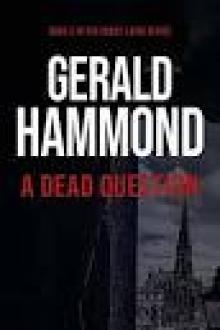 A Dead Question
A Dead Question Twice Bitten
Twice Bitten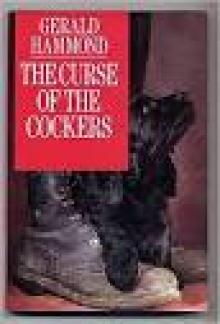 The Curse of the Cockers
The Curse of the Cockers In Loving Memory
In Loving Memory Illegal Tender (Three Oaks Book 12)
Illegal Tender (Three Oaks Book 12) Cold Relations (Honey Laird Book 1)
Cold Relations (Honey Laird Book 1) A Brace of Skeet
A Brace of Skeet Silver City Scandal
Silver City Scandal Sauce For the Pigeon
Sauce For the Pigeon Cold Relations
Cold Relations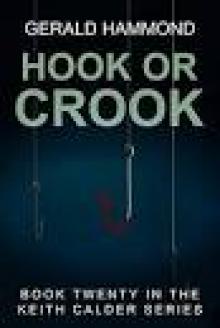 Hook or Crook
Hook or Crook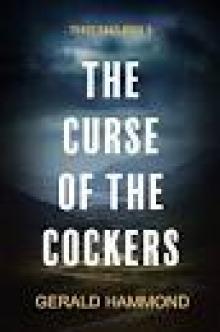 The Curse of the Cockers (Three Oaks Book 5)
The Curse of the Cockers (Three Oaks Book 5) Snatch Crop
Snatch Crop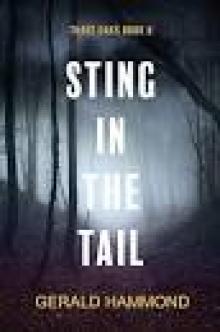 Sting in the Tail (Three Oaks Book 6)
Sting in the Tail (Three Oaks Book 6) A Dead Question (Honey Laird Book 2)
A Dead Question (Honey Laird Book 2) In Loving Memory (Honey Laird Book 3)
In Loving Memory (Honey Laird Book 3)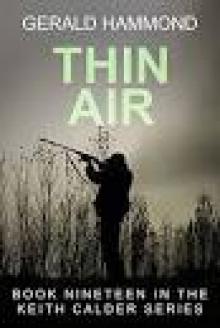 Thin Air
Thin Air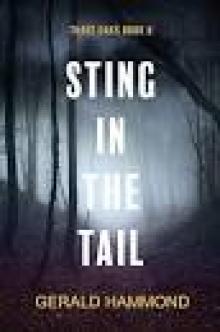 Sting in the Tail
Sting in the Tail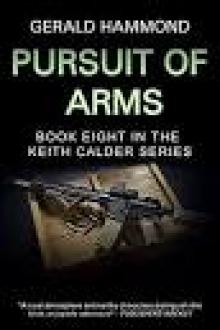 Pursuit of Arms
Pursuit of Arms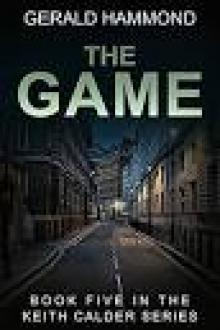 The Game
The Game Give a Dog a Name (Three Oaks Book 4)
Give a Dog a Name (Three Oaks Book 4)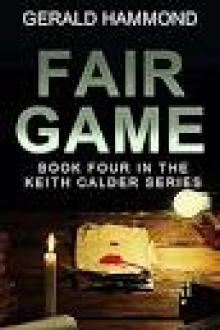 Fair Game
Fair Game The Executor (Keith Calder Book 10)
The Executor (Keith Calder Book 10) Whose Dog Are You? (Three Oaks Book 2)
Whose Dog Are You? (Three Oaks Book 2)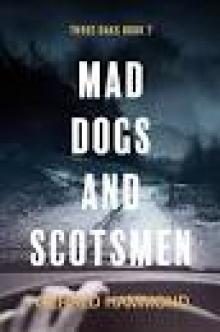 Mad Dogs and Scotsmen (Three Oaks Book 7)
Mad Dogs and Scotsmen (Three Oaks Book 7) Cousin Once Removed
Cousin Once Removed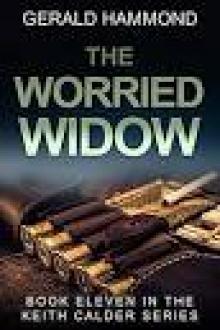 The Worried Widow
The Worried Widow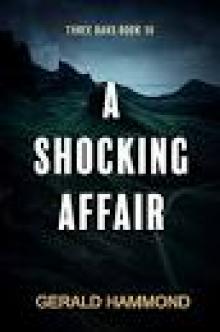 A Shocking Affair
A Shocking Affair Dead Weight (Three Oaks Book 11)
Dead Weight (Three Oaks Book 11) Whose Dog Are You
Whose Dog Are You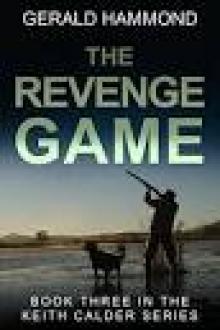 The Revenge Game
The Revenge Game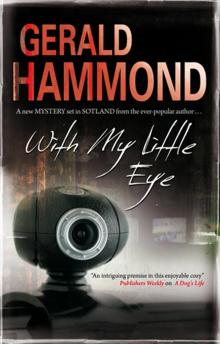 With My Little Eye
With My Little Eye Doghouse (Three Oaks Book 3)
Doghouse (Three Oaks Book 3)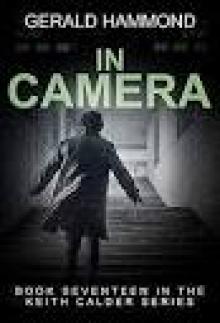 In Camera
In Camera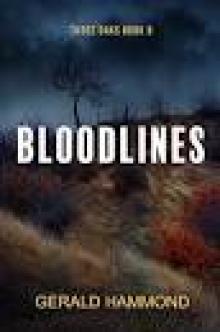 Bloodlines (Three Oaks Book 8)
Bloodlines (Three Oaks Book 8) The Unkindest Cut
The Unkindest Cut